[A.M. Weaver reviews new and older works by Barbara Bullock, explaining Bullock’s use of color, her love of reading, and her propensity for travel–and how these factors play into the artist’s work. — the Artblog editors]
Barbara Bullock has done it again! She has dared to present her works in a new way at the LaSalle University Museum, in an exhibition that opened on June 12 and runs until August 7, 2014. Straight Water Blues is an installation of select works that premiered at Seraphin Gallery in 2013, in addition to three new works. Bullock’s floating fish, ancestral spirits, birds, and abstract forms soar within LaSalle’s 18’ x 20′ gallery, taking the viewer on a phantasmal journey. The works envelop you as you glance around the room.
Use of black
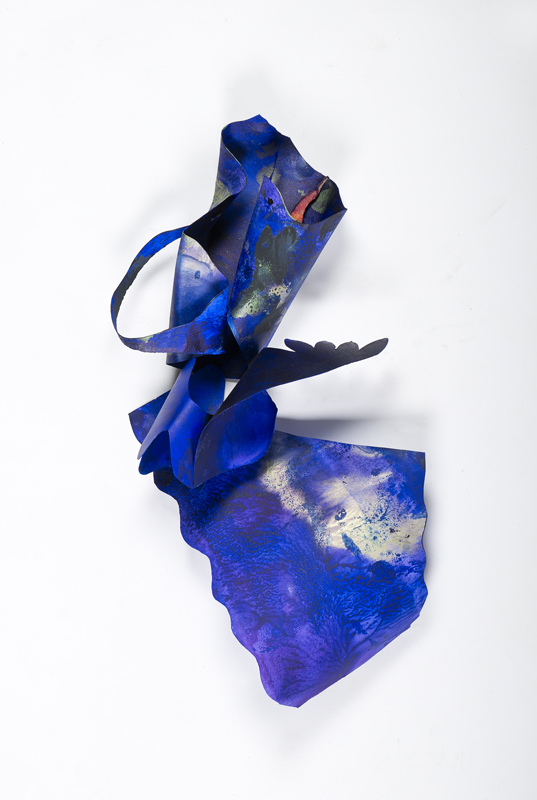
Black is a dominant motif in her constructed cutouts, and serves as an anchor for luminous glazes of primary and secondary colors she is apt to use as well. Those without cultural references beyond Western notions of the color black may be confused, but fear not…Bullock’s blacks challenge these ideas. The color of spirit, power, and transcendence is evoked. Optically, black is the confluence of all the colors in the spectrum, and within many cultural traditions outside the West, including Asia and Africa, it is an integral part of the color lexicon, with a myriad of symbolic attributes related to power and incorporeality.
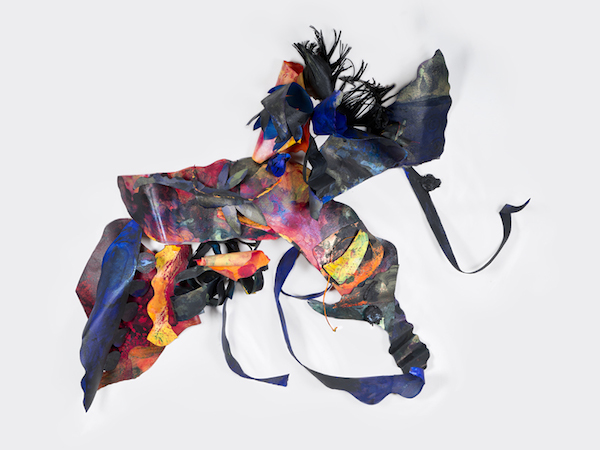
Bullock meticulously cuts and shapes pieces of 300lb watercolor paper and reassembles them into complex compositions. She even uses ribbons of black-colored strips that appear like drawn lines, weaving them in and around more massive shapes, or dangling them on the edges of her constructions. At a midpoint between painting and sculpture, Bullock’s relief works glide through space, simultaneously alluding to heft and weightlessness.
Literary influences
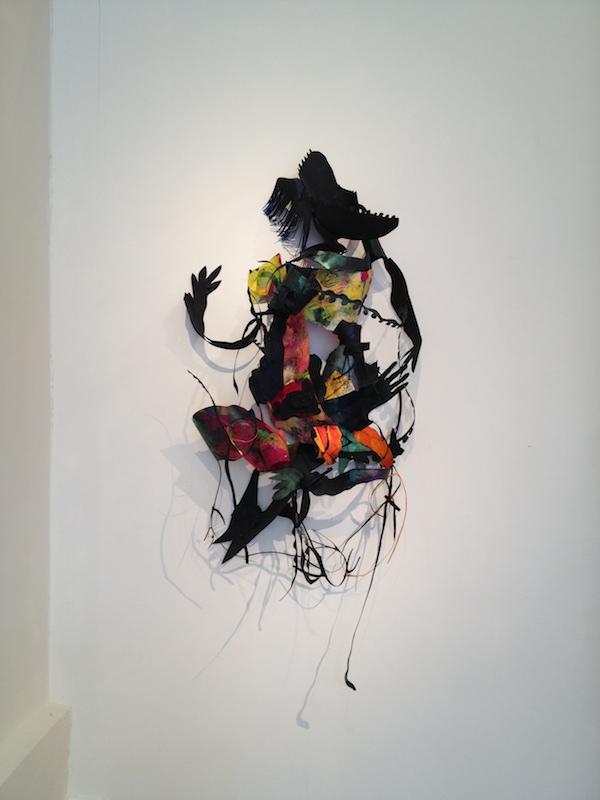
Each work such as “House Transitioning to Ancestor” (2013) has a fresh appeal. Although I have seen these works innumerable times, in this installation, they resonate anew. Bullock creates her own mythology, taking inspiration from literary works she loves, like Famished Road, by Ben Okri, which deals with a boy who spends most of his time interacting with spirits; and The Warmth of Other Suns, by Isabel Wilkerson–a collection of stories of those who experienced the Great Migration from the South to the North.
Bullock is a voracious reader, and like the storytellers she admires, she weaves her own stories based on sights from her travels, music, and dance. She often refers to man/woman’s connections to ancestors and symbiotic relationship with the spirit world: a purview that explains natural phenomena and the transcendence of the empirical in order to experience the divine. With these signifiers in place, one can easily understand her languid, undulating linear forms; the vague references to the body in motion; and the suspended fish, flowers, and fauna–all of which are used to symbolize entry into other worlds.
Bullock’s vision is shaped in part by numerous trips, meccas, if you will, to more than half the continent of Africa and the country of Mexico. She internalizes the vistas and sounds of the experiences she has collected from other cultures and translates them into codes, symbols, and color. As an Africanist, she feels a spiritual connection to people of color and often refers to the power of the ancestors. Her metaphysic inclinations are not tied to any particular religion, but stem from a respect for the planet and all that dwell on it. It’s the mystery of the universe that Bullock treads through.
Dominant colors
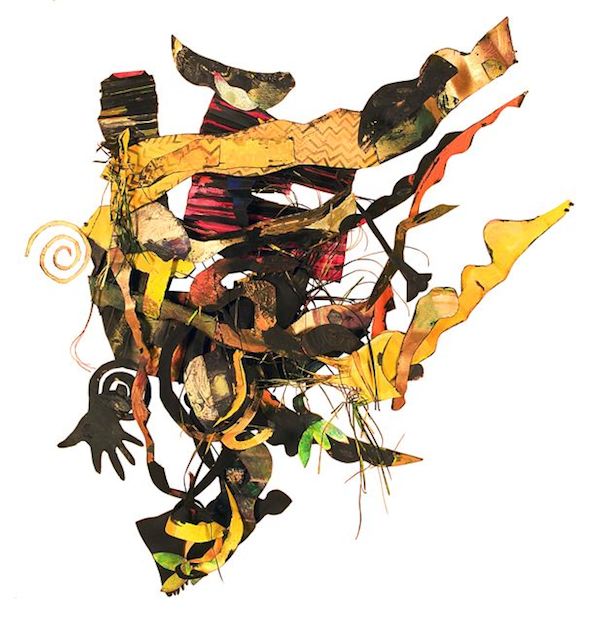
A colorist at heart, Bullock knows the power of color. There are works that have orange and yellow peeking through the mystical black sea she creates with her constructions, such as in “House Transitioning to Ancestor” (2013), and “Mojo” (2012). A small, cobalt-blue work, “Straight Water Blues” (2014), hovering below “Crow” (2012), is a slight indicator of what we may expect to see in subsequent works.
Recently, I had the opportunity to visit her studio and see new works in production. In her upcoming series, a massive work with a palette of intense black-blues and reds orchestrated into a masterful composition signifies yet another waltz with the mysterious forces in life. When you feel you are completely saturated with the underwater world Bullock has created in the exhibit Straight Water Blues, she continues to surprise, and takes you into another dimension, as evidenced in a recent work purchased by Woodmere—a constructed heart in homage to the life of Trayvon Martin, called “Trayvon – Most Precious Blood” (2013).
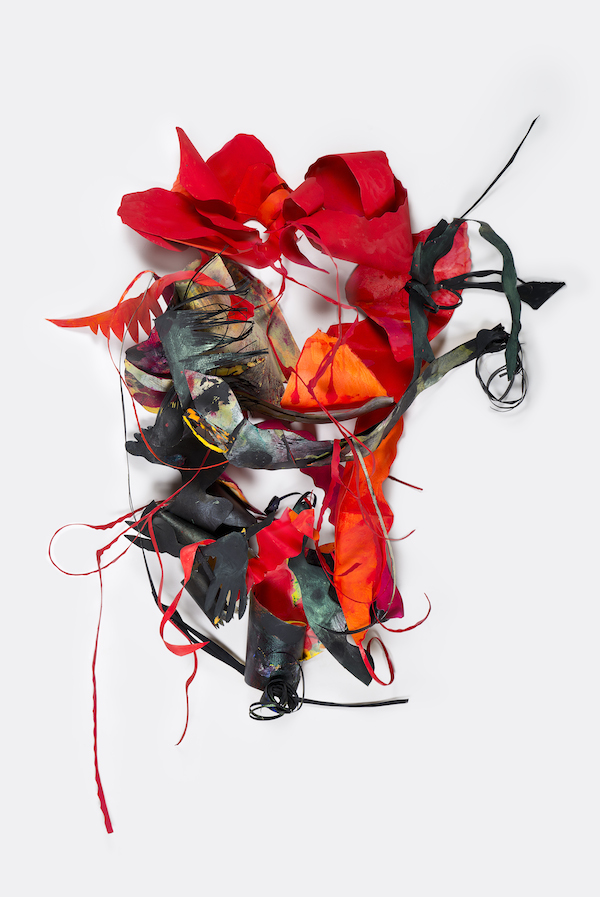
Of course, in reference to the exhibit as a whole, for my taste, the space could have been painted a color that complemented the works presented, which I think would have helped to build on the theme of the show. Straight water blues is a lick in a rhythmic Southern blues song; the blues tells stories about life, struggle, triumph, and love.
The works on display articulate a reference to bodies of water, tsunamis, and hurricanes, in spite of the stark whiteness of the walls. Everything exists within the context of the white cube. Overall, the installation could have commanded a larger space, but satisfaction is generated through the intimacy of the display. Scrutinizing the work at a distance and up-close is requisite, because each vantage point reveals gems.
Whether the show is a presentation of individual works or an installation, it reads like the latter. As you walk through the space, the works swirl around you as if you’re in a vortex. Bursts of color entice you to drink deeply of the individual richness of each work.
Barbara Bullock: Straight Water Blues is on view at LaSalle University Art Museum through August 7, 2014.
A.M. Weaver is an independent curator and arts journalist based in Philadelphia.









